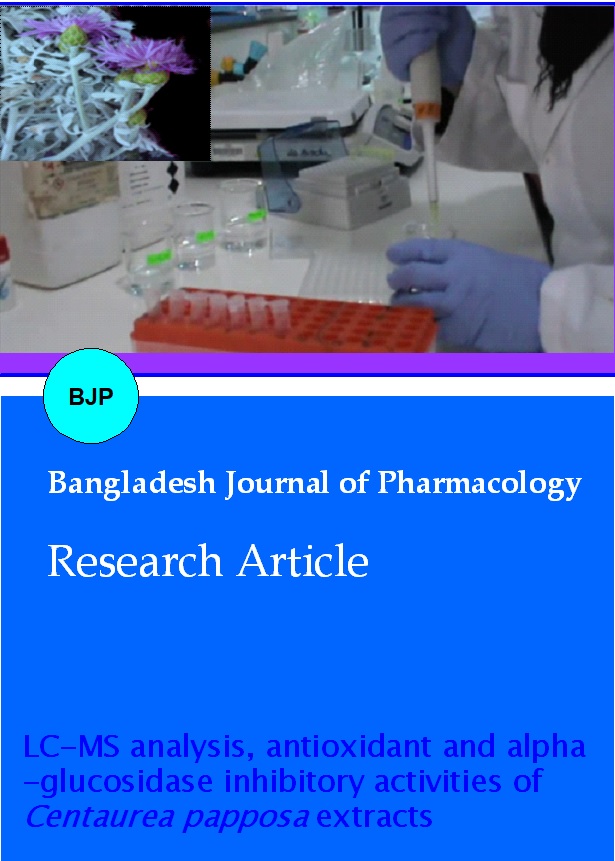LC-MS analysis, antioxidant and alpha-glucosidase inhibitory activities of Centaurea papposa extracts
DOI:
https://doi.org/10.3329/bjp.v14i4.41246Keywords:
Alpha-glucosidase inhibitor, Antioxidant, Centaurea papposaAbstract
This work aimed to ascertain the phenolic compounds and assess the antioxidant capacity and alpha-glucosidase inhibitory activity of Centaurea papposa extracts. Phenolic compounds were appraised using LC-MS technique. Moreover, antioxidant activity was investigated using DPPH, ABTS, CUPRAC and FRAP assays. In vitro alpha-glucosidase inhibitory effect was carried out. LC-MS analysis revealed the presence of 21 compounds among which 13 were phenolic acids, 6 flavonoids, 1 phenolic aldehyde and 1 benzopyrone. The ethyl acetate extract exhibited the highest activity in ferric reducing antioxidant power (FRAP) assay (IC50: 22.9 ± 2.8 µg/mL). Nevertheless the n-butanol extract was the most active in cupric reducing antioxidant capacity assay (IC50: 3.1 ± 0.1 µg/mL). A significant alpha-glucosidase inhibitory activity was displayed by dichloromethane extract (IC50: 227.6 ± 4.4 µg/mL).
Video Clip of Methodology:
Cupric reduction antioxidant capacity: 1 min 47 sec: Click to watch
Downloads
279
174 Supplementary File
80 Read
34

Downloads
Additional Files
Published
How to Cite
Issue
Section
License
Authors who publish with this journal agree to the following terms:
- Authors retain copyright and grant the journal right of first publication with the work simultaneously licensed under a Creative Commons Attribution License that allows others to share the work with an acknowledgement of the work's authorship and initial publication in this journal.
- Authors are able to enter into separate, additional contractual arrangements for the non-exclusive distribution of the journal's published version of the work (e.g., post it to an institutional repository or publish it in a book), with an acknowledgement of its initial publication in this journal.
- Authors are permitted and encouraged to post their work online (e.g., in institutional repositories or on their website) prior to and during the submission process, as it can lead to productive exchanges, as well as earlier and greater citation of published work (See The Effect of Open Access).
